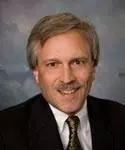Discover whether you are (1) a manager or (2) a leader in your organization.

One question I have been pondering – have you ever known an organization, either for-profit or not-for-profit, where a change in the top executive quickly and dramatically changed the results of the organization?
Top Executive – Leader or Manager?
In a business setting, whoever sits atop the formal organization chart has the greatest potential to quickly and dramatically change the company. Should this person be a leader, or a manager?
Marcus Buckingham, in The One Thing You Need to Know..., draws a clear distinction between a Leader and a Manager:
- The One Thing all great managers do: Discover What Is Unique About Each Person and Capitalize Upon It. This is easier said than done, because it requires an instinct for coaching – deriving satisfaction by understanding the strengths of a person, then figuring out how to arrange things to enable that person's growth and success – and the ability to perceive and appreciate individual differences in people.
- The One Thing all great leaders do is: Discover What Is Universal and Capitalize on It. The leader is often called upon to turn fear or anxiety into confidence, to rally people toward a better future – to do this, the successful leader must be clear about the future he or she envisions, and then define it vividly so everyone can see where the leader – and thus the followers – are headed.
Both descriptions sound good – so, which is better as the top executive?
And The Answer Is...
A Leader. Because Managers focus on unique strengths of each person, a Manager's impact will be additive, incremental, and evolutionary. Because Leaders focus on what is universal across all parts of an organization, a Leader's impact has the potential to be multiplicative, quantum, and revolutionary.
And the "additive" and "multiplicative" aspects took my mind in another direction, to look for an analogy...
Read more articles becoming a leader
"The Analogy"
A confession – I'm a science geek. I love math and physics – and I think Rhett, my physics professor brother, has one of the greatest jobs in the world!
So when my intuition linked the opening question with a lever as a possible analogy, it was a natural next step to research Britannica.com, Merriam-Webster.com, and Wikipedia.org for a deeper understanding of the lever. Here's a distillation of what I found:
A Lever is a system consisting of a pivoting Bar, transmitting Effort to lift a Load. Its effectiveness depends on positioning the Bar on the Fulcrum, and on the overall length of the Bar.

Applying the Analogy to Business
How can this translated to business? I quickly saw analogues for three parts of the system:
- "Effort" corresponds to "Assets" – resources available to deploy, such as People, Process, Technology, Cash, Inventory, and Equipment.
- "Bar" corresponds to "Product/Service Delivery" – steps taken to convert, multiply, and transmit Assets to produce results.
- "Load" corresponds to "Results" – desired outcomes, such as shipments, customer satisfaction, and financial returns.

I'll admit I was stuck on the final two pieces – "Pivot" and "Fulcrum." It finally dawned on me – the answer lay in how I came up with this analogy, the difference between a Leader and a Manager – and how they impact Results:
- A Manager can increase Results only additively or incrementally, because he works within the system's existing balance. Thus, a Manager clearly works within the Assets part of the diagram.
- A Leader, however, can increase Results, often in a multiplicative or quantum manner. And because the Leader may be constrained – in the short-term – by the existing Assets and Processes of the organization, there is something clearly different about how a Leader changes the system's balance, compared to a Manager.
And this led me to complete the analogy:
- "Fulcrum" corresponds to "Position" – alignment of the products and services the business offers, or is able to offer, with what the market wants or needs.
- "Pivot" corresponds to "Leader" who sees the future, defines it vividly, in terms of what to do and where to go – that's the "Position" – and communicates these clearly throughout the organization.
Summarizing this:
A Business is a system consisting of Product/Service Delivery (bar), converting Assets (effort) to produce Results (load). Its success depends on aligning Assets and Product/Service Delivery with the strategic Position (fulcrum) defined by the Leader (pivot).

It seems magical that a small change to a company's Position can have dramatic effects on Results. Yet, our life experiences of seeing various businesses operate and of using a crowbar or scissors (both are types of levers) indicate the deep truth of this.
How well the Leader adjusts the company's Position to deploy Assets, delivering Products and Services to yield Results, is a measure of his Leverage. The Leader is the Pivot – he or she can change the balance of the entire Business.
Leverage Can Be Great...
In the 1980's and early 1990's, IBM languished – as always, it had a good workforce, products, and services, but its performance never lived up to its potential. In April 1993, new CEO Lou Gerstner arrived. Workforce, products, services – these were the Assets Mr. Gerstner inherited, and which could not be changed in the short-term. Mr. Gerstner very quickly, however, began turning around the fortunes of this massive company. Thinking became clearer, actions became crisper, product and service offerings became customer-centered around the strategic concept of "information technology integrator" – these changes, while very real, were largely intangible, reflecting IBM's new Position.
Mr. Gerstner did not, in the short-term, change the Assets, Products, or Services of IBM – rather, he re-aligned them to better address market needs, from his strategic insight about the Position of the company. This change in Position changed the balance of the system, unleashing the potential in IBM's Assets, delivered as Products and Services. He shifted Position and multiplied the effects of his Assets. Had he not done this, Mr. Gerstner would have required more Assets to improve Results.
In IBM's case, Leverage was highly positive – and invigorating to the people in that company.
...And Leverage Can Also Backfire...
Leverage benefits a company by increasing the reach of its assets. Leverage endangers a company, however, by amplifying the magnitude of its flaws. The recent Wall Street meltdowns of Lehman Brothers, Fannie Mae, Freddie Mac, and Merrill Lynch illustrate financial leverage – returns are high when things go well, and results can be disastrous when things get bumpy.
While this is financial leverage, there was obviously a CEO who defined the Position – the mission, vision, values, and market position – for the company. The CEO somehow compromised one of these key elements of Position – likely forgetting the mission to increase long-term value for their shareholders, or renouncing the values which made the company successful. Such compromises moved the company's Position far away from its Assets. Estimated price tag for Wall Street's failed leadership and disastrous financial leverage? $700 billion.
People and Leverage
How do people respond to Leverage from the Leader? By nature, the Leader makes bold claims, which can activate people and inspire them to work more efficiently, creatively, and effectively, toward the common goal. Ideally, the best Leaders change the Position of the company, to increase the Results of the existing Assets, Products, and Services. If, however, Position is not changed, the quickest way to increase Results is to change Assets – either by adding more, or squeezing more out of them. While people have a certain amount of squishiness and can be squeezed short-term to produce more work, this cannot be sustained indefinitely.
It All Comes Back to People
While a Leader is a key part of the overall system, he can't do his job without Assets to lever. And the most flexible of all Assets are People. Recall the case of Lou Gerstner and IBM – the underlying technology, products, and services would take a long time to modify. People are more adaptable, flexible, mobile, and versatile than any other asset – and they are the ones who ultimately carried out the new strategic positioning for IBM.
Like any other Asset, People need continued investment and nurturing to maintain their value to themselves and to the company. As my friends at Dale Carnegie teach, it's about people – their skills, knowledge, and attitude. In a slumping economy, it is tempting to eliminate personnel development costs – avoid this, if at all possible. Regardless of the economy, your best performers understand their true value and know they can always find a job elsewhere. People need – and want – to be well-led and well-managed.
Treat your People as the valuable Assets they are – otherwise, you travel alone.
Click here to Find Your Hidden Assets
![]()
Todd L. Herman





